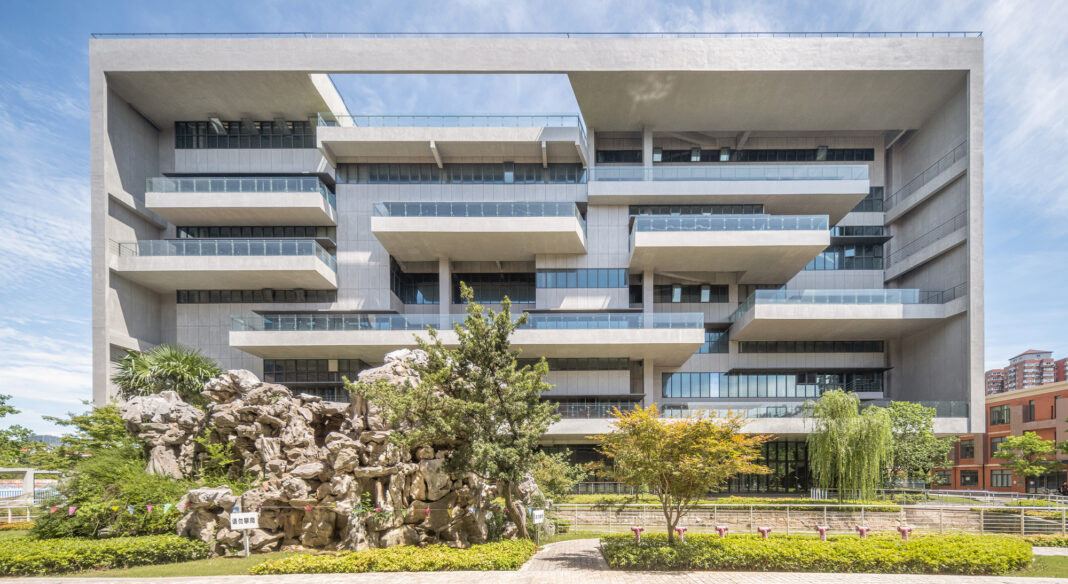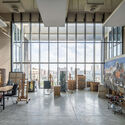
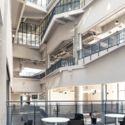

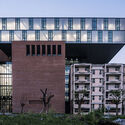
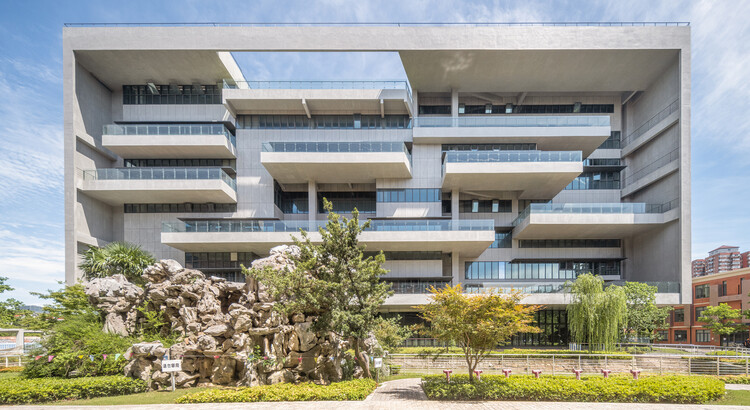
- Area:
73006 m²
Year:
2023
Manufacturers: 成功科技(嘉兴)有限公司

Text description provided by the architects. The Shanghai University Yanchang Road Campus spans 19.2 hectares, featuring new constructions and renovations within the existing architectural complex. The project includes clusters for the College of Art, College of Film, and an experimental training base for film production and cultural exchange, forming an integrated art education complex with functions including research, teaching, experimentation, training, exhibition, and communication.

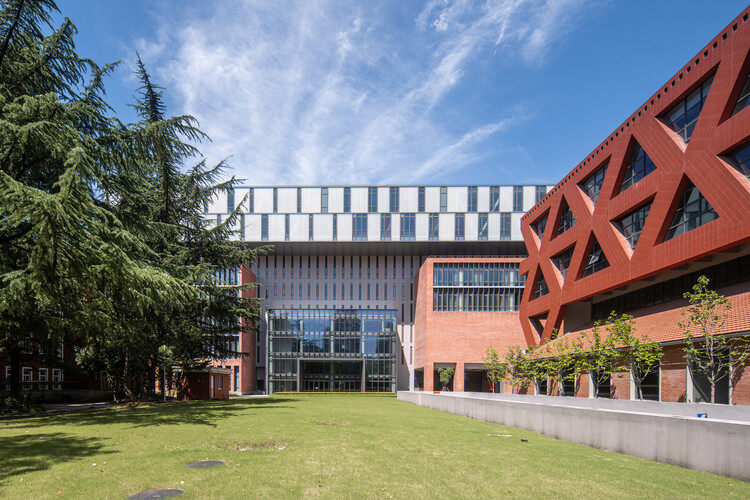
The campus renovation locates at the middle of the campus, adding up to 73,000 m² of total floor areas. It focuses on harmonizing old and new structures. Adopting a “strategic infill development and vertical expansion” approach, the design retains well-preserved existing buildings, and respects the original campus layout while introducing modern vitality. New buildings blend modestly with historical surroundings to echo the campus heritage and depict the cultural identities of the two colleges.
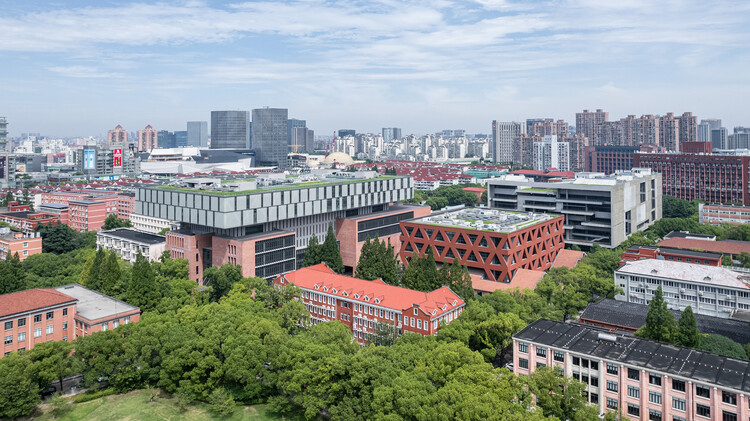
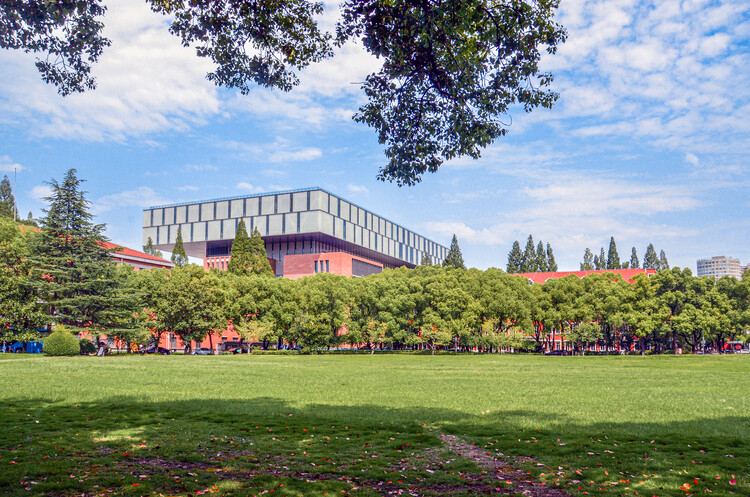
The architectural form of Film College reflects the logical relationship between internal functions and spatial organization. The base volume characterized by red brick walls harmonizes with the old campus through its warm color palette, material texture, and compatible architectural scale. The lobby and communal spaces feature expansive window systems that integrate external landscapes into interior environments, creating a cohesive campus vista.

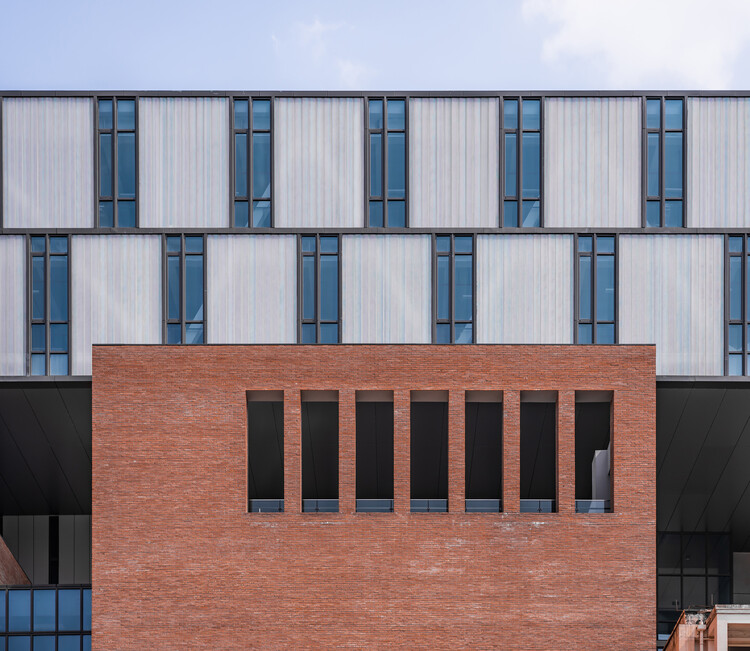
The upper suspended volume of the Film College is supported by six core tubes and steel trusses, achieving cantilevered structures and flexible open-floor layout. These steel trusses simultaneously generate distinctive spatial effects within the building. The horizontally extended U-shaped glass volume floats above the existing campus, establishing a dialogue with its surroundings through innovative architectural language.
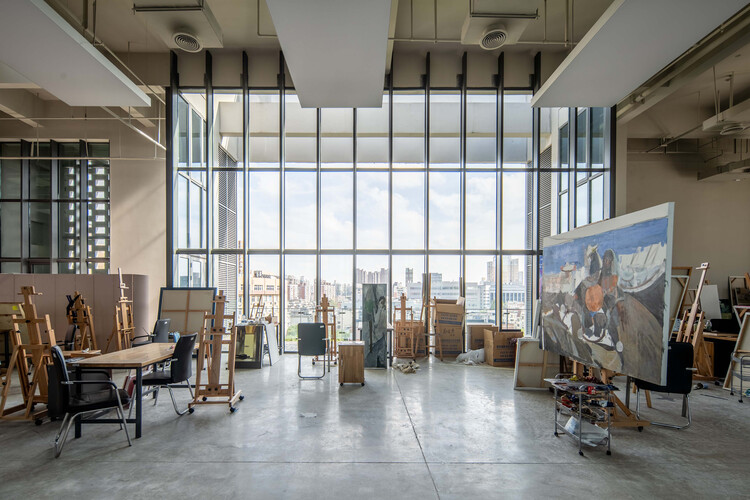
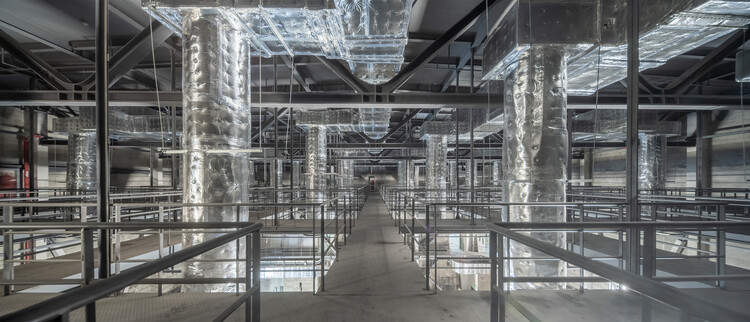
The diverse height requirements of various disciplines of the Art College are addressed through a split-level layout, which integrates interconnected atria, grand staircases, and ramps to create a gallery-like circulation path within the building. The design not only resolves functional height disparities but also fosters an interactive layered environment that encourages collaborative learning and creative researching.
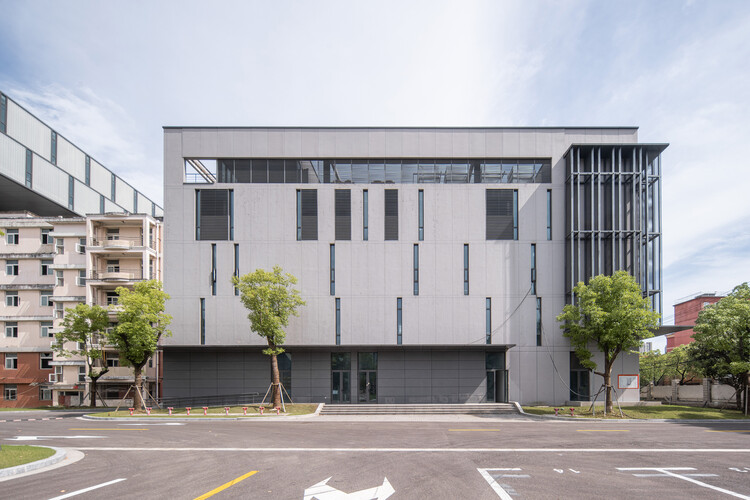
The interwoven spatial hierarchy naturally translates into a rhythmically articulated facade. Situated in a bustling urban area, the campus aims to drive cultural and industrial development in its vicinity, transforming itself into an open and shared hub that merges with the city’s cultural and creative ecosystem.


